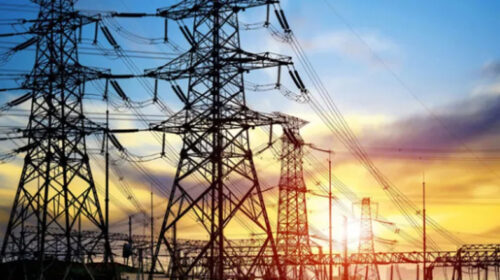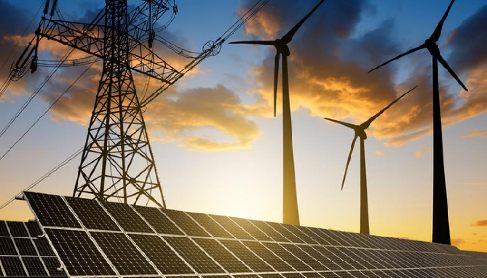Every time a new government takes control of our country, it starts to reinvent the wheel, always with new zeal and zest. It vows to revolutionize the country in a matter of months, not years, with slogans like (in no particular order) “turn around Pakistan”, ‘make Pakistan an Asian tiger”, “a job paradise for foreigners”, and the list goes on ad infinitum.
Taskforces are formed overnight to work on “war footings”, mostly composed of the same old hands, hoping this time they will discover the “treasure” their eyes had missed previously. The latest addition to this colorful potpourri of slogans is seeking “out-of-the-box” solutions in the power sector and implementing these on a “fast track”.
Unfortunately, the mess that we see in our power sector today hasn’t struck us as a thunderbolt from the sky. It’s the culmination of decades of ill-conceived policies devised and implemented on personal whims and vested interests, bypassing the usual institutional channels. Since there is no shortcut to hard work in life, the fate of the new government’s old approach to power sector reforms is a foregone conclusion. As an old Japanese saying aptly puts it, “When you are thirsty, it is too late to dig a well”.
Our power sector issues are complex, deep-rooted, and chronic, and cannot be solved through quick fixes and Band-aids. This sector is in dire straits already and needs a systemic overhaul, not cosmetic face-lifts. The government is welcome to use any out-of-the-box solutions, but first, it must set the fundamentals of this sector right that are constantly sucking the blood of this nation and also have the potential to defeat any future effort for reform no matter how promising it appears in theory.
Secure, reliable, affordable, and sustainable power supplies are to modern society what lifeblood is to the human body. The power supply and delivery system are among the most critical, complex, and capital-intensive infrastructures for any country. It’s important in its own right as it helps a country in providing basic amenities of life to its citizens and turning the wheels of its economy. It’s even more important as it underpins the proper functioning of all the other, and equally-critical, infrastructures, facilities, and services.
In this writer’s view, there are five building blocks for a viable, vibrant, and sustainable power supply and delivery system for our country: (i) a strategic vision at the top to guide planners and decision-makers in downstream entities; (ii) a carefully-crafted, concrete, and time-bound strategic plan to translate that vision into reality; (iii) a set of mutually-complementary and consistent policies and their stability over time to further aid achieving of planned goals; (iv) a flexible and responsive institutional structure to effectively implement these plans and policies; and (v) a competent team of managers, free from external interference, to pursue their corporate objectives.
A moment’s reflection on the performance of our successive governments in the power sector should make it evident that they have failed us on every single count. But before we delve into finding a way out of the quagmire, let’s first have a quick account of the state of our power sector with respect to the above five building blocks.
Why our power sector is (almost) at the brink today?
Lack of Vision: “A leader is one who knows the way, goes the way, and shows the way,” declares John Calvin Maxwell, a noted American thinker on leadership. Our terminally sick and constantly bleeding power sector needed a clear and strategic vision from our political leaders and a strong belief and trust in that vision undeterred by resistance on the ground from bureaucracy, political opponents, and vested interests. What we see in reality is an utter lack of foresight and imagination and churning out run-of-the-mill solutions every now and then—good prescriptions for headaches but not for a patient suffering from cancer. The piecemeal, disjointed, issue-specific, and lobbyist-driven initiatives can hardly be termed a well-thought-out and imaginative strategic vision from our leaders.
Absence of a Strategic Plan: A vision without a plan is merely a dream. While we do see a hotch-potch of efforts and initiatives by every government to reform the power sector, these did not form part of a cohesive and integrated strategic plan for the country. A draft of the National Electricity Plan for 2022 to 2026 has been in circulation since January this year but, to the best of this writer’s knowledge, has not been approved as yet. It was a good first step by the previous government and deserves to be further improved and issued by the present government.
Policy Failure: On the policy front too, we have faltered spectacularly. Starting with the 1994 private power policy, Pakistan has seen a streak of power sector policies, introduced at regular intervals by successive governments in their effort to attract private investment, mostly in its generation function. These policies failed to deliver their intended results and have actually led to serious unintended consequences like excess capacity, suppressed demand, runaway circular debt, shifting of businesses to other countries, and punishingly-high electricity tariffs.
When devising public policies, the effort is always made to set a clear hierarchy among different policies, from top national policies down to local ones. It’s also ensured that the policy for a specific sector of the economy guides those in its subsectors. Our governments have followed a reverse order instead and issued sub-sector policies first (for instance, ARE Policy 2019 and Electric Vehicles Policy 2019), then the National Electricity Policy 2021, and we believe that it’s planning to issue a National Energy Policy soon.
Institutional Structure and Capacity: Organizations are not static in time and often lose their effectiveness with the passage of time as the environment around them changes. No meaningful institutional reforms have been introduced and power sector entities are still being run in the same old manner from the top. While the case study after case study from power sector reforms introduced over the past three decades from around the world demonstrate that a critical factor to the success of these reforms has been the existence or creation of reform-friendly institutional structures and capacity on the ground, our leaders thought that they can squeeze space-age performance from stone-age institutions.
Lack of Merit and Poor Management: Last but far from least, our governments needed to deploy competent teams of professionals in the various power sector entities, strictly selected on merit and for their vision, capability, and competence to materialize their visions for the power sector and effective execution of their plans. No step was taken by any government on such lines and power sector entities are still being run by ad hoc appointments, often violating the merit, or in many cases, disregarding the technical competence and track record of the incumbents.
A way out of the present quagmire
Years of poor leadership and mis-governance have brought the power sector to the verge of collapse and threaten the whole economy as well. Our political leaders and decision-makers must change their mindsets and make the fundamental improvements that are required and long overdue to pull this sector out of the present abyss and put it back on a path to recovery and self-sustenance. The rewards of having a viable power sector will be countless when contrasted with the politically expedient and short-sighted remedies.
New Vision: Fortunately, some recent developments in the energy market have opened a historic opportunity for our leaders to set things right in the power sector. Small power plants have emerged that beat the cost and performance features of large power plants. Renewable technologies, even without government support, are proving competitive with their conventional competitors. Smart grid technologies are unlocking new opportunities for squeezing more value from existing assets and also for managing demand. Affordable battery storage is enabling consumers to reduce, and even eliminate, their grid dependence by coupling these with their rooftop PV systems. Electric vehicles (EVs) are also opening up new vistas for their dual role as loads as well as sources of supply.
The future of this industry is expected to be ruled by small, distributed, and renewable grid- and consumer-oriented supply schemes that could be best managed through liberalizing and devolving the various functions. Our leaders must not let this opportunity slip by us. They should use it to phase out our dependence on large, capital-intensive, and import-dependent supply schemes. They must capitalize on these new developments to reorganize the power sector on a decentralized and distributed grid, instead of following the old track that would just accelerate this sector’s drift to bankruptcy.
Three essential features of a viable power system for any country are its “affordability”, “security”, and “sustainability”. On all these counts, the decentralized and distributed renewable-based supplies outperform the traditional centralized grid. With over 30 percent of our population still without grid access and the existing consumers literally choking under the prohibitively-high electricity prices, demand-centered electric supplies at significantly lower costs can provide a much-needed sigh of relief to consumers.
These systems, due to their reliance on ubiquitous renewable supplies, will add to the energy security of the country which can be even further enhanced by promoting their local manufacture and supply of these systems. These will also be sustainable not just because they do not degrade our ecosystem but also because they will promote substantial employment generation in the country, not restricted to any particular region.
In a previous article, “New Vision for powering Pakistan’s development dreams” in this magazine, this writer presented a broad-brush sketch of a new vision for the power sector around the following five strategic threads:: (i) it should be fully alive, responsive, and aligned to the emerging market forces; (ii) it should provide enabling regulatory and business frameworks to reorganize the power sector along open, transparent, fair, and competitive lines; (iii) it must replace the traditional business model with a more innovative, liberal, flexible, and decentralized model in which all market players can participate fairly and beneficially; (iv) it should shift decision-making in this sector closer to the end-users; and (v) it should catalyze a visionary R&D program to inform evidence-based policy formulation and decision-making in the country.
Strategic Plan: The government will need to translate its new vision into a strategic plan to gradually phase out central-station and mega-scale conventional power supply schemes and substitute these with small-scale renewable power supply options at demand-ends or as close as possible to the end-users of electricity. The draft National Electricity Plan referred to previously in this article appeared very weak in this aspect and we hope it would be improved before its final approval.
This plan must be unified, integrated, and holistic by clearly identifying the most appropriate blending of various energy carriers, including electricity, in serving the various energy-based service needs of the people, businesses, and industries. It will also need to transcend the typical but largely artificial boundaries among the various sectors of the economy and their traditional reliance on specific fuels.
Policy Frameworks: The government must streamline and institutionalize the policy formulation and implementation process in the country by making it transparent, objective, and consultative. Every proposed policy must be screened through specified criteria such as efficiency, cost-effectiveness, and distribution of cost and benefits among various stakeholders. Specifically, the compatibility of the existing institutions for effectively implementing the intended reforms and policy instruments must not be overlooked.
The existing policies should be reviewed and, if need be, revised to encourage the deployment of distributed energy resources and discourage the induction of mega projects, especially those based on foreign technologies and fuel supplies. These policies should also encourage the deployment of storage technologies in the system to enhance the value of renewable energy technologies while relaxing their intermittency and variability constraints. Similarly, besides being a source of new electricity demand, battery packs in EVs can also support the power grid in more economical ways than the traditional solutions, and as such should form a key component of any future power sector policy.
Consistency of policies among the major sectors of the economy and sub-sectors and their stability over time are two pre-requisites for converting the strategic vision of our governments into reality as they will raise investors’ confidence, reduce their risk perceptions, and increase investment flows at a reduced rate of returns.
Institutional Structure: There is compelling evidence that the primary cause of the failure of Pakistan’s previous efforts to reform the power sector has been its failure to change the organizational structure and institutional capacity. Any new effort, therefore, must acknowledge the critical role of institutional capacity and managerial competence.
Our government should decentralize decision-making in the power sector by gradually lateralizing the existing vertical hierarchies in the power sector with more open and flexible organizational structures, and devolve decision-making, as much as possible, closer to the end-users, that is, the distribution companies (DISCOs). This is imperative as DISCOs are in the best position to grasp the dynamics of consumer demand, the potential of serving it through supply- or demand-side solutions, and the viability of different strategies in this respect.
The government and regulator’s role in the new setup should restrict to setting the rules of market participation only. They should avoid micro-managing the business. Both will need to let go of their present “command and control” mindset. Instead, they should take a more liberal approach to encourage small and independent power producers and consumers to assume a more active and participatory role in this sector’s various activities.
Professional Management: As “good organizations require good managers”, managers are the true change agents of the organizational transformation process as they have to lead the new processes and work-streams, and also guide their successful implementation by keeping up staff morale and preventing fatigue and cynicism from setting in that often accompanies such radical change processes.
The importance of competent professional managers in the success of any future reform in the power sector cannot be emphasized more, as quoting the words of a retired Harvard University professor, Georges Doriot, a Grade A management with a Grade B plan is preferable to a Grade B management with a Grade A Plan.
Supportive R&D: The government will need to catalyze, with sufficient seed funding, a visionary R&D program in the country to promote distributed and renewable technologies, by suitably segregating them among the local institutions. This R&D should aim to provide the presently missing, but much-needed, information base to devise evidence-based policy formulation and decision-making in the country.
This R&D should focus on issues like the following: (i) understanding consumer behavior with respect to choice of built environment, selection of appliances and their post-purchase usage; (ii) adoption of already commercial supply and demand technologies, identifying any existing barriers, financial and non-financial, to their wider uptake, and how these can be removed; and (iii) renewable resource distributions at different sites, their correlations with electricity demand, and the most feasible ways to match distributed supplies with demand.
To conclude, and using US president JFK’s words, “Change is the law of life and those who look only to the past or present are certain to miss the future.” Pakistan is at an extremely difficult point in its history as far as energy is concerned. it’s a time for our leaders to act, and act boldly to deconstruct the monolithic, inefficient, and poorly-managed power sector and reconstruct it around the five building blocks discussed above by embracing the new market trends which hold great promise for setting it on affordable, secure, and sustainable footings. The choice is obviously all ours.





